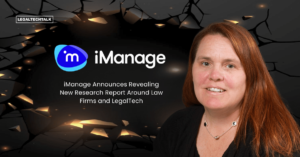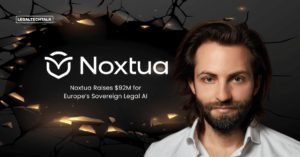In this insightful interview, Tom Dunlop, CEO and Founder at Summize, discusses the key barriers and pillars for successful contract lifecycle management (CLM) transformation within in-house legal teams. He emphasises the importance of user adoption across the entire business and the need for a compelling business case to secure budget.
Tom outlines the critical factors for sustainable CLM implementation, including aligning stakeholders early, highlighting business-wide benefits, and ensuring consistent adoption across departments. He also shares his vision for the future of CLM systems, featuring decentralised and embedded experiences that seamlessly integrate with existing business tools, minimising friction and facilitating wider adoption of contract processes.
Merlin Beyts: What has been the most significant barrier for in-house legal teams taking the next step in their transformation journeys?
Tom Dunlop: The first is user adoption. Or, more specifically, a lack of consideration around how the wider business may adopt new technology or processes.
I’ve seen many companies decide they need a CLM, primarily because they’ve heard an exaggerated statistic about how other businesses have enhanced or accelerated their contract processes by 90%. The reaction to this becomes a feature war between vendors rather than actively considering what will work for your company.
Part of overcoming this is first looking at your existing processes and working out where the biggest problems are. However, legal teams cannot always map their procedures correctly, or if they can, the flow can be too complex. For example, they don’t often think about where they want to centralise requests—from Teams, Slack, Email, Salesforce, Jira, or all of them. You don’t need to completely overhaul your processes, but identifying your gaps at this stage will highlight your pain points and how a CLM tool can overcome them.
Once you’ve successfully done this, to overcome the problems with user adoption, you need to bring together everyone who frequently interacts with your contracting process. Every £ in business must be accounted for, so any new tool will require buy-in from at least one stakeholder.
CLM tools are (or certainly should be!) used by the wider business – which means you need to identify the key stakeholders in the process and their project requirements. The first rule of legal tech is that it’s not just for legal! Ensuring that they have all had input will guarantee that the functionality of your newly chosen CLM will address your business’s unique concerns for those involved. It also allows them to be bought into the process (and purchase) early, so you don’t face last-minute objections.
The second barrier is understanding how to build a compelling business case to secure budget. Many in-house legal professionals haven’t bought technology before, so they don’t have experience in how to make a case to bring it into the organisation. Early CFO buy-in is critical, and that involves being able to articulate the anticipated value (time savings, headcount reduction, reallocation of resources, reduction in outside counsel spend etc.)
Merlin Beyts: What are the pillars that dictate successful and sustainable CLM transformation?
Tom Dunlop: The ultimate success metric for long term transformation is adoption across the business. I would go one step further and suggest that success is more about the number of business users using the CLM solution, not just the legal team.
I’ve spoken to many businesses that have failed to realise the benefits of their technology because they’ve brought in a tool to solve all of legal’s problems – but the rest of the business doesn’t use it. Poor implementation and onboarding play a part here, where the focus has been on setting up the technology rather than exploring what behaviours and functionality it is enabling.
Therefore, for the CLM rollout to be a success and to be sustained, you must win the support of multiple departments. Without their support, there is no business case! Your project must be seen as a business-wide benefit and not just one for the legal team. You should be able to highlight the value that your company and end-user will get in return for implementing the tool.
Ensuring the stakeholders are aligned early on typically increases your ROI from faster contract processes and will help make your adoption and approval process more manageable!
Merlin Beyts: What does the CLM system of the future look like?
Tom Dunlop: There are many CLMs in the market. However, the key question is, how do these products fit into the business? While I broadly agree that change management is critical, changing an entire business process to make a CLM work will not be successful, no matter how much planning goes into it.
So, for a CLM system to be successful, it requires a new way of thinking and a strategic approach to the infrastructure and user experience. Summize’s approach removes friction and frustration for the business by embedding our user experience directly within the wider business’s day-to-day tools; in other words, where they spend most of their time. We call it a “Decentralised CLM.”
The decentralised approach creates a digital thread that spans every contract interaction and links them all together across your suite of business applications. With this approach, the user experience (rather than the platform experience) is paramount!
Regardless of where the journey starts, your contract processes are embedded into existing ways of working – think Q&A chatbots in Teams / Slack, copilots in Microsoft Outlook and Word and embedded experiences within Salesforce or Jira. This is much more than just pushing alerts or notifications into these integrated platforms. It’s about creating a natural extension to existing ways of working….a fully native, immersive experience.
It’s about keeping all your digital information connected and flowing smoothly during the entire lifecycle. Everyone involved with contracts can easily find and understand the information at each stage, with minimal training, distraction, or loss of productivity. Taking this approach, there’s less change management, less friction, and ultimately, wider consistent adoption of the contract processes across departments.
The world is moving to a consolidated suite of critical applications, so rather than driving people to login to yet another tool (and remember how to use it), embedded experiences will be the route to success.
Of course, I can’t not mention AI! AI enhancements have greatly improved the efficiency of CLM solutions – speeding things up, allowing for natural language summaries and translations, automating data processes and creating a much more human interface where you can ask questions and quickly get the answers. This trend will continue, but CLMs must stay true to robust security measures to ensure that data is never compromised. Our view is that AI should underpin the whole experience, but it never replaces the importance of a human in the contract process. For us, it’s ensuring we continue to focus on human-centric design so that we save legal professionals time (without compromising risk!), and ultimately allow them to focus on higher value, strategic work by automating the manual and mundane tasks that dominate so much of the daily workload.
Read the full LegalTech Diaries Volume 4: https://www.legaltech-talk.com/legaltechdiaries/volume-4/








